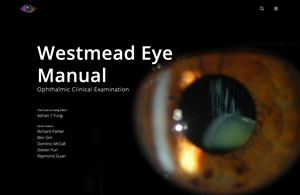13 Rhegmatogenous Retinal Detachment Special Scenarios
13.1 Rhegmatogenous Retinal Detachment: Re-detachment Surgery
13.2 Macular Hole Retinal Detachment
13.3 Retinoschisis Retinal Detachment
13.4 Optic Disc Pit Retinal Detachment and Maculopathy
13.5 Giant Retinal Tear Detachment
13.6 Retinal Dialysis
13.7 Macular Folds
13.8 Sickle Cell Detachment
13.9 Viral Retinitis Associated Retinal Detachment
13.10 Paediatric Retinal Detachment
13.11 Coloboma Associated Retinal Detachment
13.12 Inherited Retinal Dystrophies and Retinal Detachment
13.10 Paediatric Retinal Detachment
Pediatric retinal detachments are complex in part due to their characteristics. When compared to adults, they are more likely to present with worse initial visual acuity, chronic duration and the macula detached.[1] Proliferative vitreoretinopathy (PVR) is more common, reported to be present in 20-60% of cases, partially due to chronicity as well as increased levels of inflammatory mediators. Various predisposing factors to these retinal detachments that must be elucidated with history, imaging and testing (Figure 13.10.1).
Read SP, Aziz HA, Kuriyan A, et al. RETINAL DETACHMENT SURGERY IN A PEDIATRIC POPULATION: Visual and Anatomic Outcomes. Retina. 2018;38(7):1393-1402.
Common Conditions to Consider
- Rhegmatogenous Retinal Detachment
- Trauma
- External trauma/accident
- Self-induced
- Self-injurious
- Rubbing
- Pathologic myopia
- Stickler Syndrome
- Marfan Syndrome
- Wagner Syndrome
- Knobloch Syndrome
- X-linked Retinoschisis
- History of prematurity
- Treated Retinopathy of Prematurity (ROP)
- Spontaneously regressed ROP
- Trauma
- Traction Retinal Detachment
- Retinopathy of Prematurity
- Familial Exudative Vitreoretinopathy (FEVR)
- XLRS
- Persistent Fetal Vasculature
- Toxocara
- Norrie’s Disease
- Exudative Retinal Detachment
- Coats disease
- Retinoblastoma
Preoperative Planning and Diagnostics
- Pregnancy and birth history
- Genetics referral in the event of abnormal facies or body habitus where genetic disease is suspected
- TFamily History
- Retinal Detachments
- Autoimmune disorders
- Joint disorders including hyperflexibility and early onset arthritis
- Extensible skin
- Pets
- Ancillary testing for documentation, diagnosis and follow up
- TFundus photography
- Fluorescein Angiography
- OCT or OCT-A
- B-Scan Ultrasound
- A-Scan Ultrasound
- Anterior segment ultrasonography
- Examine family members if necessary
- Examination under anesthesia
- TOften needed for appropriate diagnosis and management
Surgery
Pre-Incision
Retinal detachment repair is performed with general anesthesia monitored ideally by a pediatric anesthesiologist. Ancillary testing of both eyes as well as blood samples for genetic testing is facilitated at this time. In specific cases where repeated general anesthesia may be undesirable due to social challenges, or systemic morbidity, immediate bilateral surgery is an option.[2]
Yonekawa Y, Wu WC, Kusaka S, et al. Immediate Sequential Bilateral Pediatric Vitreoretinal Surgery: An International Multicenter Study. Ophthalmology. 2016;123(8):1802-1808.
Wound Placement
Anatomical considerations of surgical landmarks must be taken into account. Exposure to the eye is of utmost importance, lateral canthotomy might be necessary for exposure. The sclerotomies are placed according to age and pathology (Table 13.10.1). Pediatric sclera tends to be very tough and trocar entry may be facilitated by holding adjacent sclera or Tenon’s capsule and providing counter traction. If there is a need to remove the lens, or there is concern for iatrogenic retinal breaks with pars plana or pars plicata entry, limbal approach is preferred. Of note, a short trocar system is available from DORC and is especially useful in baby eyes.
All rights reserved. No part of this publication which includes all images and diagrams may be reproduced, distributed, or transmitted in any form or by any means, including photocopying, recording, or other electronic or mechanical methods, without the prior written permission of the authors, except in the case of brief quotations embodied in critical reviews and certain other noncommercial uses permitted by copyright law.
Westmead Eye Manual
This invaluable open-source textbook for eye care professionals summarises the steps ophthalmologists need to perform when examining a patient.

